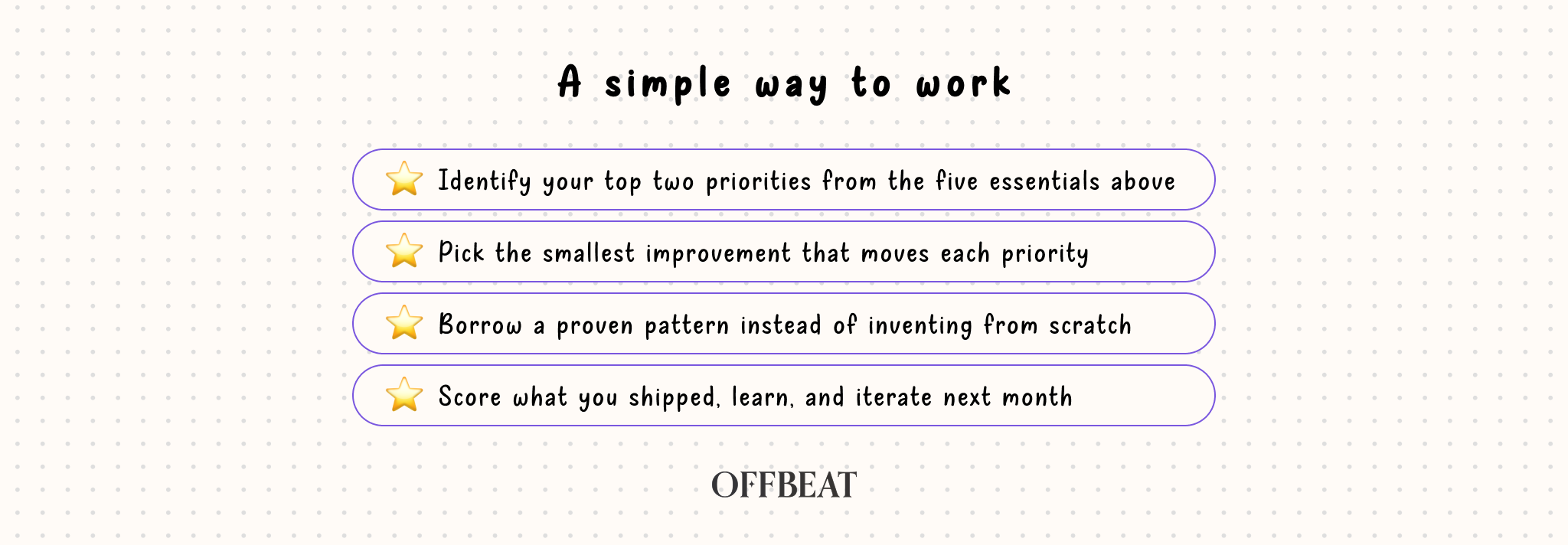Being a one-person L&D “team” is more common than it seems. You’re expected to set direction, deliver programs, and prove value, often without a sparring partner or a clear brief. The result? Isolation, information overload, creeping impostor syndrome, fuzzy role boundaries, and relentless pressure to show impact.
Still, the upside is real: you can design what matters most for your company, fast. This guide distills what to focus on and how to move, from firefighting to a simple, repeatable system.
Every one-person L&D team has these challenges
Last year, we ran research to better understand the biggest struggles of one-person L&D teams. The results confirmed what many already feel in their day-to-day:
- Feeling isolated: Being the only one who speaks "L&D" can be lonely. Without someone to bounce ideas off, decisions take longer, and it’s easy to get stuck overthinking every little detail.
- Drowning in information: There’s a lot of content out there, but finding what’s relevant can be overwhelming, especially when time is limited.
- Impostor syndrome hits hard: It’s natural to second-guess yourself, particularly early on. Without direct support or past L&D experience, imposter syndrome tends to linger.
- Facing unclear expectations: As a solo L&D pro, you’re often handed a role without clear boundaries. From onboarding to leadership training, figuring out where to start or what’s most important can be overwhelming.
- Struggling to prove L&D’s value: Demonstrating how learning drives business results can feel like an uphill battle, especially without a team to share the load.

The reality is that solo L&Ds end up wearing all the hats: make managers effective, build onboarding, support careers, scale learning with or without tech, and stretch small budgets, while also handling culture, compliance, and performance processes. It’s a lot, and prioritization is your best friend.
What one-person L&D teams need most
With limited time to explore the theory and a constant stream of competing priorities, one-person L&D teams are searching for practical, time-saving solutions. They need real-world examples, vetted resources they can trust, and quick, digestible learning that helps them make an impact fast, along with peer support to fill the gap of having no internal team to brainstorm with.
Survival essentials
1) Make managers awesome
Managers scale culture and performance. Put your energy into the basics that move the needle:

- Find the blockers. Run light research to learn what stops managers from leading well.
- Define the must-have skills. Make them specific to your company context.
- Create peer learning. Small, recurring circles beat one-off workshops.
- Guide new managers. Offer a simple transition framework with milestones.
- Measure leadership. Use short 360s, engagement questions, and scorecards.
- Document people processes. A clear, searchable hub for hiring, onboarding, feedback, and performance.
- Offer reflection time. Coaching, mentoring, or targeted workshops—kept practical.
- Communicate the “why.” Consistent channels so managers see goals, strategy, and priorities.
Pro tip: Start with a single manager cohort and one skill theme (e.g., better 1:1s).
2) Nail the onboarding experience
Onboarding is your fastest route to visible impact. Build a path that shortens time-to-productivity and deepens belonging:

- Close the loop. Regular check-ins and short surveys with new hires.
- Track a few KPIs. Time-to-productivity and onboarding NPS are enough to start.
- Create a one-stop shop. Day-one essentials, self-serve.
- Pre-boarding matters. Make the first touchpoint happen before day one.
- Equip managers. Simple checklists, conversation guides, and timelines.
- Standardize the core. A consistent spine across roles, with role-specific layers on top.
- Connect to culture. Rituals, stories, and values in action.
- Make the product real. Early exposure to how your product or service works and wins.
Pro tip: Publish a public-facing “How we onboard” page or doc. It raises the bar internally and helps recruiting.
3) Support career development
In fast-moving orgs, careers aren’t ladders, they’re portfolios. Your job is to make growth visible, possible, and owned by the individual:

- Pick simple metrics. Time-to-promotion, internal moves, plan completion.
- Link to people processes. Promotions, performance, compensation, connect the dots.
- Normalize career talk. Bake it into 1:1s and people-team touchpoints.
- Make paths concrete. Lightweight frameworks and individual development plans.
- Back autonomy with stipends. Let people choose relevant learning.
- Spotlight wins. Share internal growth stories to set social proof.






.svg)






.png)
.png)
.png)
.png)
